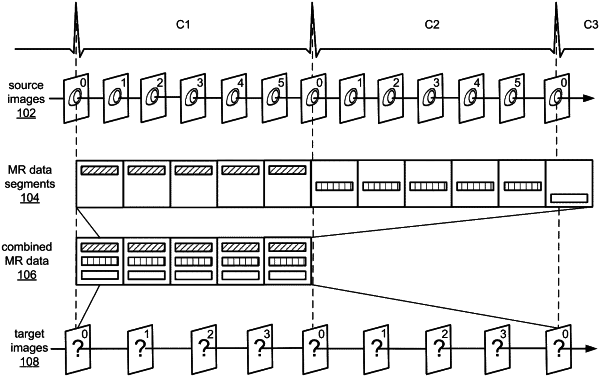| CPC G06T 5/70 (2024.01) [G06N 3/08 (2013.01); G16H 30/20 (2018.01); G16H 30/40 (2018.01); G16H 50/20 (2018.01); G16H 50/70 (2018.01); G06T 2207/10088 (2013.01); G06T 2207/20056 (2013.01); G06T 2207/20081 (2013.01); G06T 2207/20084 (2013.01); G16H 50/50 (2018.01)] | 20 Claims |

|
1. A motion artifact simulator configured to inject motion artifacts associated with a medical procedure into medical magnetic resonance (MR) images, comprising:
one or more processors configured to:
obtain a set of source MR images of a scanned object, the set of source MR images being substantially free of motion artifacts and comprising multiple sub-sets of source MR images, each sub-set of source MR images being associated with one of multiple physiological cycles of the scanned object;
derive at least one MR data segment for each of the multiple physiological cycles based on the sub-set of source MR images associated with the physiological cycle or a modified version of the sub-set of source MR images associated with the physiological cycle;
obtain a MR data set based on the respective MR data segments derived for the multiple physiological cycles; and
generate one or more target MR images based on the MR data set so that the one or more target MR images comprise a motion artifact.
|